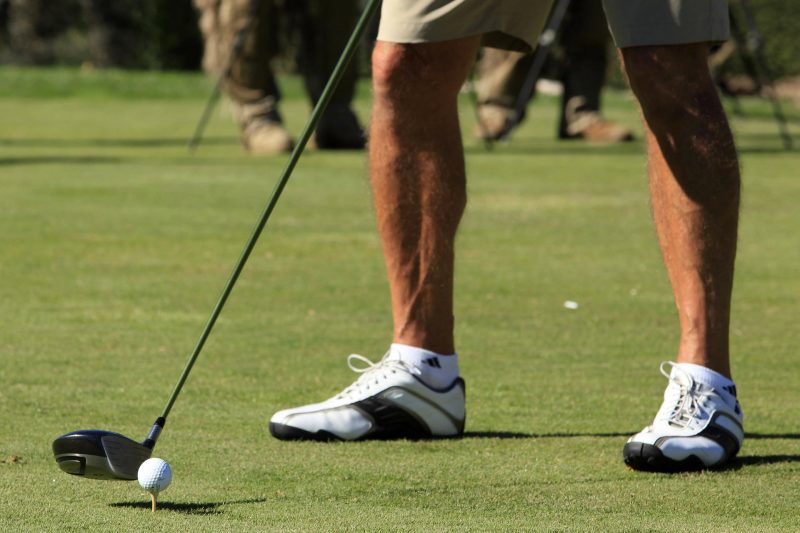Since golf was invented many years ago in ancient Scotland, players have needed to lift the ball to hit their shots from the tee box. But so, how did they do it initially? Straightforwardly: players used to build a small pile of soil or sand to lift the ball and hit it with the driver. Hundreds of years ago, “What size of golf tee should I use?” was not even a question that golfers would ask themselves. They just knew that they could improve their ball position from the tee of each hole with soil or sand.
The first golf rules that referenced the tee date back to 1744. The “Articles and Laws for Playing Golf” clearly stated that “your ball must be ‘teed’ from the ground.” This is how the word “tee” was introduced into the golfing lexicon, which is still used today.
The history of the tee
Originally golf tees consisted of a flat object placed on the ground, with a raised part to hold the ball. The first tee was patented by the Scots William Bloxsom and Arthur Douglas in 1889. Then a model called “Perfectum” appeared, manufactured by the Englishman Percy Ellis in 1892. It was the first of its kind that was nailed to the ground. Later in time, the “Improved Golf Tee” was presented. Developed back in 1899 by the American George Franklin Grant, it consisted of a wooden cone with a rubber sleeve.
Over the years, the tee was perfected, and the North American William Lowell gave it the most finished configuration. In the 1920s, he began experimenting with rubber and birch wood. Finally, in 1925 Lowell patented a kind of peg to place the golf ball. At first, he made it green, but it was lost in the grass after using it. After several tests, he decided to paint them red and sold them under the name “reddy”.
Multiple-champion Walter Hagen was one of the first to use this tee model, which spectators took as souvenirs after attending a golf round. It is worth remembering that Hagen is considered the “father of professional golf” and the one who took the legendary Scottish sport to another level in terms of professionalism.
Finally, Jock Hutchison (winner of the 1923 British Open) suggested the Lowell family to give the invention to the Spalding company. By 1926, there were already more than 200 companies manufacturing golf tees. As a reference, it is worth noting that until 1940 the US Patent Office had granted around 150 patents for various types of tees.
What types of tees exist?
Wooden tee: the classic tee model is the wooden one. This is a traditional tee that comes in different sizes and colours. Its lightweight configuration offers less resistance during the swing than a plastic tee. The disadvantage of other tees is that they tend to break easily. They are commonly made from cedarwood. Nowadays, ecological and biodegradable tees are also manufactured.
Plastic tee: they are the most used due to their durability. They come in three different sizes and are sturdier than wooden ones. Each size corresponds to the club you want to use in each stroke. They are practical and available in more colours than wooden ones. Some are even painted in bright colours that allow them to be found easily under low light circumstances, preventing them from getting lost.
One Tee and Little One Tee: these are plastic tees that come in two well-defined sizes. The Little one Tee is used for iron tees, and the One Tee is used for driver and wood shots.
Range tee: this is a fully adjustable tee with high stability. It has 8 different points to hold the golf ball and a resistant body. It is used for practice areas, both on synthetic carpets and natural grass.
How to choose the fitting tee for your game?
It is essential to choose the correct tee that suits your game. To begin with, you must take into account the average distance you hit the ball and the type of swing you make with each club. The angle of attack of your swing is key to defining the correct height of your tee.
With practice, and depending on the shot you want to take, you will find the correct height of the tee for each situation. Let us see an example. If your tee is too low, you will hit the top of the ball, and the trajectory will be too low. On the other hand, if it is too high, you will hit the ball below, and the ball’s trajectory will have a more significant flight.
Conclusion
Over the years, very sophisticated and innovative tee prototypes have emerged. Some have tiny bristles on their upper part to support the ball like a toothbrush. Depending on your game and your tastes, you will find countless alternatives.
We believe that wooden tees offer better performance than plastic ones regarding the material. They have good stability and quickly reduce friction and bending when making a golf shot. They are the least durable, but this should not be a problem with a good supply of tees in your golf bag.
